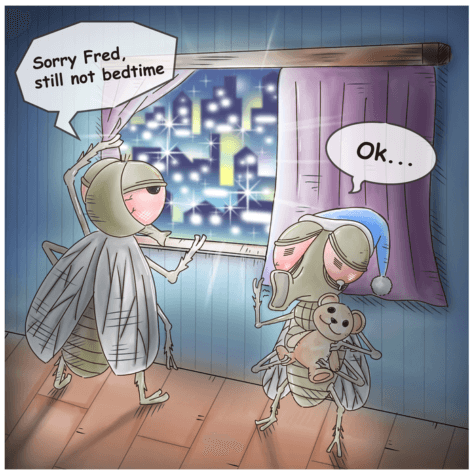OSAKA, Japan — Urban lights and warm city temperatures are keeping insects awake at night, according to a recent study. Artificial light at night can affect every aspect of insects’ lives, not just luring moths to their deaths around bulbs, say Japanese scientists.
Rats and toads may be able to prey on insects more easily and lamps can also obscure the mating signals of fireflies. New research into a species of flesh fly has shown many insects change their behavior depending on day length, an ability called photoperiodism. Increased nighttime light can throw off an insect’s photoperiodism to the point where they refuse to enter hibernation.
Scientists from Osaka City and Setsunan universities conducted experiments indoors and outdoors: in the lab they mimicked bright urban to dark rural areas and tested varying temperatures. They found the percentage of flies entering hibernation decreased as illumination increased and as the temperature increased from 15°C to 20°C.

In the field, the team measured a site where the moon could be seen in a clear sky and another in a residential area with street lamps. The percentage of flies entering hibernation in rural areas increased from around three weeks earlier than their urban counterparts.
“The study looks at a species of flesh fly called Sarcophaga similis, but the results could be applicable to any animal species that rely on predictable environmental signals for biological processes like growth, reproductive behavior, sleep, and migration,” says Dr Ayumu Mukai, of Setsunan University in Japan, in a statement.
“Recognizing the conditions urbanization brings upon insects where they actually live would be a great step forward in mitigating any negative effects,” added Professor Shin Goto, of Osaka City University, “Future studies with a variety of insect species at different sites, in cities with different climatic regions would clarify what levels of light pollution and urban warming effect insect seasonal adaptation.”
The findings are published in the journal Royal Society Open Science.
South West News Service writer Joe Morgan contributed to this report.
